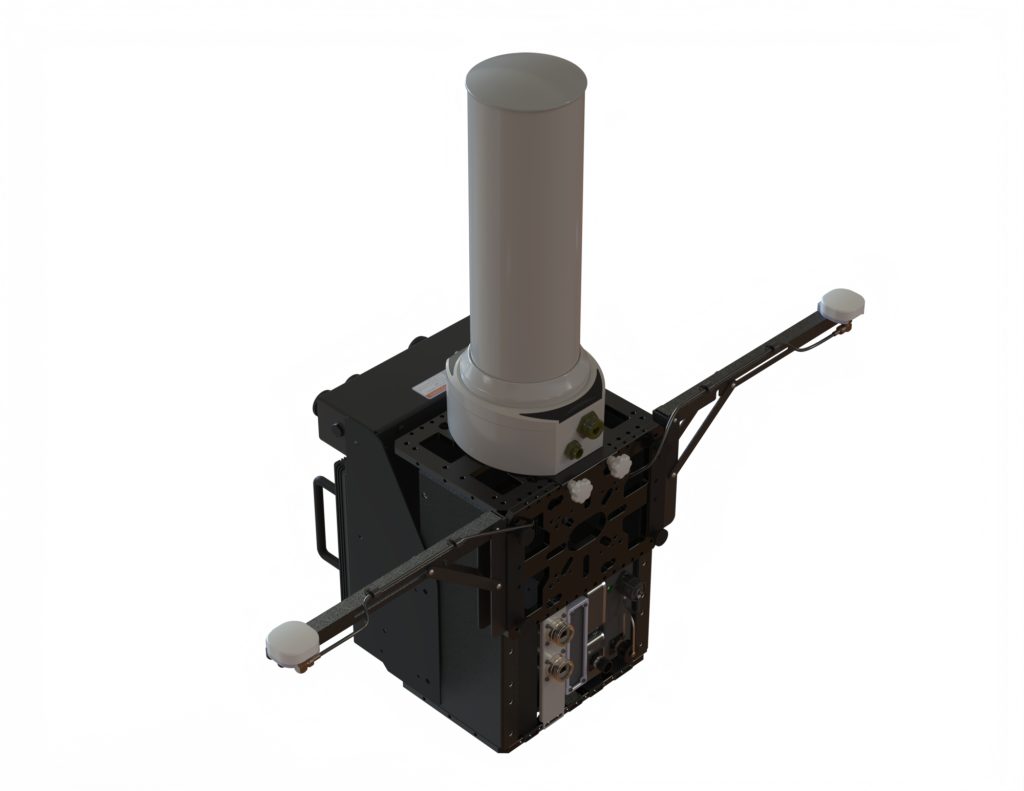Spectra Group launches Troposcatter on the Move
The UK’s Spectra Group has launched a new product called Troposcatter on the Move (TOTM) during the SOF Week exhibition, according to a 1s May company press release. The product, developed in partnership with Comtech and BATS Wireless antennas throughout 2024, enables armed forces to communicate securely over the horizon whilst on the move, without relying on satellite communication systems.
The TOTM uses the 10-Watt Compact Over-the-Horizon Mobile Expeditionary Terminals (COMET) series from Comtech as well as Electronically Steered Antennas from BATS into an integrated terminal in what the company describes as an industry first.
The new capability has been tested in naval applications, during “ship to shore and ship to ship scenarios proving the concept of TOTM by demonstrating systems tracking and communicating with other nodes while on the move using GPS, but also showcasing the potential for advanced mobile connectivity in challenging environments without reliance on GPS,” the press release states.
To date, sea trials of the TOTM capability have focused on the littoral elements of warfighting, including scenarios that simulated “island hopping in the Florida Keys, Florida Panhandle and off the coast of California.”
Tech profile: Troposcatter on the Move

The TOTM uses the proven COMET capability as well as Electronically Steered Antennas from BATS to provide a communication range in excess of 100 km. Credit: Spectra Group
It is worth starting with an explanation of troposcatter communications. Short-range radio communications rely on a line of sight between the sending radio and the receiving one. It is possible to communicate over much longer ranges using high frequency (HF) radio links, which bounce off of the ionosphere multiple times, and can send small packets of information over thousands of kilometres. However, HF communications at those ranges can be unstable and the weather can interfere with the quality of the transmissions. Troposcatter works by bounding high powered radio waves in the ultra-high frequency (UHF) or Super High Frequency (SHF) bands (300 MHz – 3 GHz). The troposphere is the lowest level of the Earth’s atmosphere, which contains irregularities such as variations in air density, temperature, humidity, and turbulence. As the radio waves travel through this layer, a small portion of their energy encounters these irregularities and is scattered in various directions. Then, a highly sensitive receiver, which is aimed at the same general volume of the troposphere, is able to collect these signals, despite their weakness, and extract the data that they carry. This provides reach over hundreds of kilometres.
The TOTM from the Spectra Group provides a range in excess of 100 km and bandwidths up to 210 mbps, which is sufficient for a video call. The system does not need GPS to work, which is a growing demand within the defence industry as adversaries have focused on it as a weak link within western militaries. It utilises the COMET terminal from Comtech, which in its original configuration weighs 25 kg and provides communications up to 60 km with a bandwidth of 60 mbps. However, as noted above, troposcatter communications require both emitter and receiver to be looking at the same approximate volume of the troposphere, which means that conventional systems would have to come to a stop to align antennas and transmit. The key difference between that and the TOTM is that a ship can continue sailing and transmit, reducing reliance upon satellite communications or providing more resilient alternatives.
Calibre comment
Proliferated low earth orbit satellite constellations can provide more resilient satellite communications than conventional military constellations that are typically held in a geosynchronous orbit. However, their transmissions can be detected and monitored, and cyber-attacks can disrupt them significantly. Moreover, satellite communications can come with prohibitive costs, measured in the tens of thousands per week. So, long-range radio links like the Troposcatter on the Move from the Spectra Group provides additional resilient and cost-effective communications links, although it would generally be expected to complement other layered communications capabilities. As militaries look to add more and more autonomous systems to their forces, particularly at sea, the issue of secure links with sufficient bandwidth will become key.
By Sam Cranny-Evans, published on 6th May, 2025.

Sign Up for Updates!
Get insider news, tips, and updates. No spam, just the good stuff!






